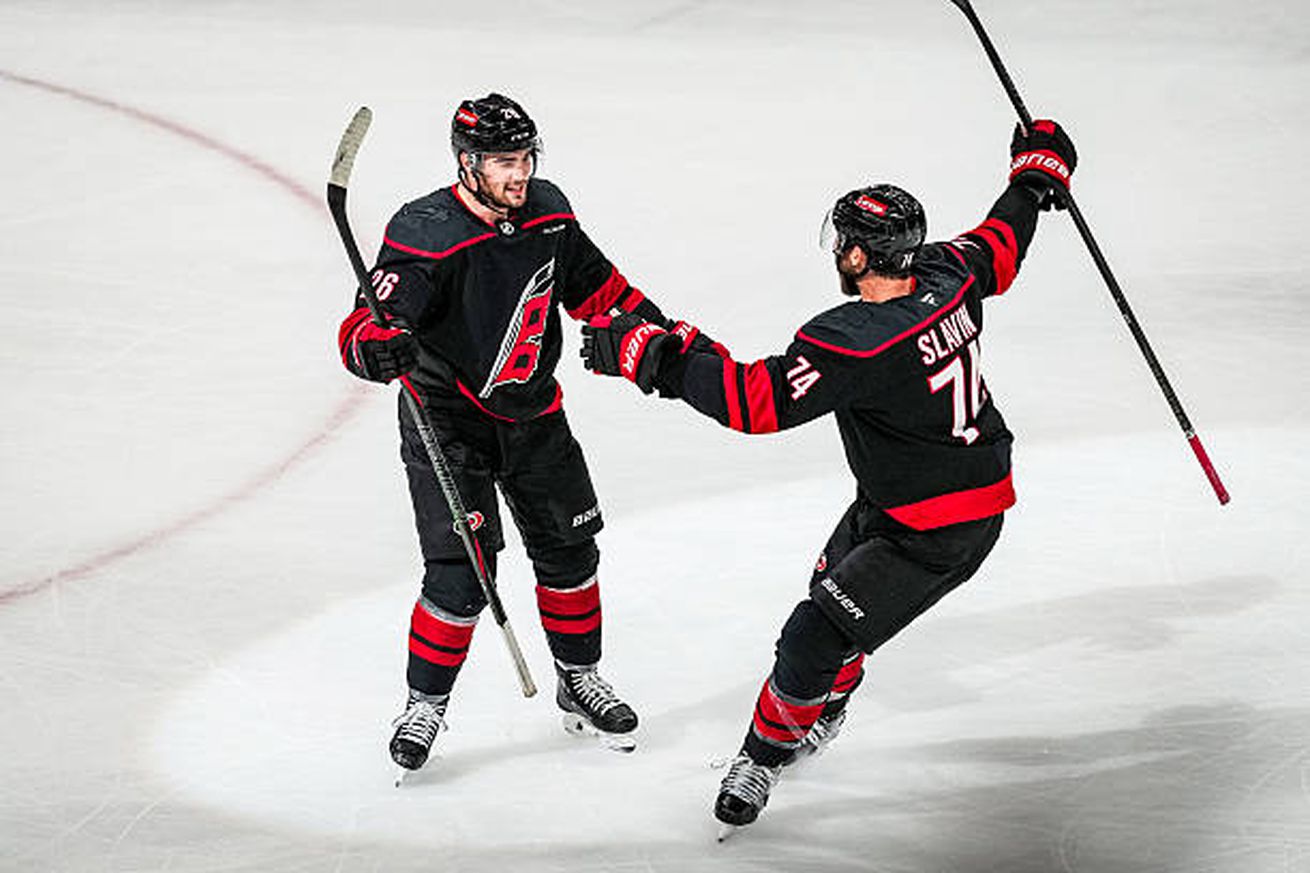
The veteran defenseman could play a much bigger role in his second year in Raleigh.
When the Carolina Hurricanes saw a mass exodus from their roster following the 2023-2024 season, longtime defensive mainstays Brady Skjei and Brett Pesce were among the salary cap casualties.
Many pundits, and even head coach Rod Brind’Amour, wondered if the losses could be withstood to an extent that would allow the Hurricanes to maintain their status as a playoff team.
General manager Eric Tulsky and his team in the front office plugged the holes on defense with veterans Sean Walker and Shayne Gostisbehere, and though neither were the shutdown forces that Skjei and Pesce were, they more than got the job done in their respective roles.
The duo comprised the team’s bottom pairing for much of the season, but Walker got looks on other pairs, and his absence was noticeable as the Eastern Conference Final against the Florida Panthers wore on.
Signed to a five-year, $18 million contract last July that looks like a steal given the current market, Walker’s deal provides some certainty at a position that is seeing its market value explode.
This summer, Tulsky has already moved to add K’Andre Miller to the blue line, but the loss of Brent Burns makes it an open question as to who will partner with number one defenseman Jaccob Slavin on the top pairing.
Lefties Miller and Alexander Nikishin have been mentioned, but if the team wants to preserve proper handedness on its most-used pairing, and I’d argue regardless of that factor, it should be Walker.
Why Sean Walker Should be on the Hurricanes’ Top Pairing
In the Brind’Amour era, the Hurricanes have prioritized having an offensive-minded partner for Slavin, to mixed results.
The most productive season one of Slavin’s partners has had was Dougie Hamilton’s 2019-2020 before his injury, as he put up 1.54 5-on-5 points per 60 minutes.
That coincided with the most productive season of Slavin’s career on a per-60 basis, and the duo was a dominant force before Hamilton went down.
Aside from that, Hamilton put up 1.15 points per 60 in each of his other two seasons with the team, and Burns’ first year in Raleigh was strong as well at 1.29.
Tony DeAngelo’s 2021-2022 season as Hamilton’s replacement checked in at 1.01, and Burns was at 0.8 in 23-24 and 1.02 in this most recent season.
All of those efforts were better in terms of even strength offense than the 0.78 Walker had in his first season in Raleigh, but his numbers have looked much better when given more opportunity.
In 2023-2024 with the Flyers, Walker produced 1.07 points per 60 before being dealt to Colorado at the trade deadline. There, he was good for 1.47 points per 60.
You could see that and assume it was due to an unsustainably strong offensive environment in Denver, but that was better than Bowen Byram, Sam Girard and every other non-Makar and Toews Colorado regular on the backend. The team also shot just 9.70% while he was on the ice in the regular season, so the production was very much legitimate.
Walker served as the defensive conscience to Gostisbehere’s aggressive playdriver this year, but could he be better suited as the offensive end of a Slavin pairing?
There’s strong evidence that that’s the case.
Slavin and Walker played 23:35 together on this most recent playoff run, and though it’s of course a very small sample size, the results were excellent.
The duo controlled 70.91% of the shot attempts, 66.67% of the shots on goal and 67.66% of the expected goals.
Let’s assume that Miller starts the season with Jalen Chatfield and Nikishin continues to ease into the league on the bottom pairing alongside Gostisbehere.
In early offseason comments to Joe Ovies and Joe Giglio, Brind’Amour lamented the fact that the absence of Skjei and Pesce forced Slavin and Burns to take all of the toughest minutes in every game.
In the video of discussion of the Miller trade the team released on social media, Brind’Amour directly compared Miller to Skjei.
“He reminds me of Brady Skjei,” Brind’Amour says. “That’s with the skating, and getting up in the rush.”
Could a Miller-Chatfield pairing earn enough of Brind’Amour’s trust to take some of that burden off of Slavin next year?
Given the recovery speed they both possess, Miller’s size and Chatfield’s all-around defensive game, I don’t think it’s out of the question at all.
With extra firepower in the form of Nikolaj Ehlers up front, it’s easy to see a world where a more freed-up version of the Slavin pairing also produces more, and someone with Walker’s subtle offensive strengths could both contribute to and benefit from that.
Slavin’s best even-strength offensive season since the 19-20 campaign with Hamilton came in 2023-2024, when he and Burns were deferring the toughest matchups to Skjei-Pesce and a bit more focused on offense.
Is Walker going to go out there and put up a 50-point season? Almost certainly not, since he’s far down the power play depth chart.
But a deeper blue line could allow Brind’Amour to deploy Slavin in a more proactive than reactionary way.
Walker has the skating ability and instincts to be a part of that working well, and unlike DeAngelo, and Burns and Hamilton at their respective worsts, Slavin wouldn’t have to also cover for a defensive liability much of the time.
This team is at its best when the blue line is deep behind Slavin without a clear weak link, and assuming Miller is not a complete disaster, the roster is set up that way as of now.
